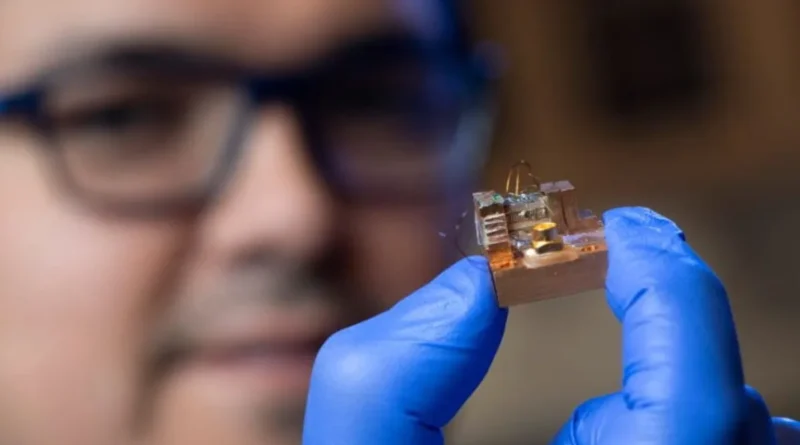Tiny ‘bending station’ transforms everyday materials into quantum conductors
A collaboration between scientists at the University of California, Irvine (UCI) and Los Alamos National Laboratory (LANL) has developed a method that converts everyday materials into conductors that can be used to build quantum computers, a press release said.
Computing devices that are ubiquitous today are built of silicon, a semiconductor material. Under certain conditions, silicon behaves like a conducting material but has limitations that impact its ability to compute larger numbers. The world’s fastest supercomputers are built by putting together silicon-based components but are touted to be slower than quantum computers.
Quantum computers do not have the same limitations as silicon-based computing, and prototypes being built today can compute in seconds what supercomputers would take years to complete. This can open up a whole new level of computing prowess if they could be built and operated with easier-to-work material. Researchers at UCI have been working to determine how high-quality quantum materials can be obtained. They have now found a simpler way to make them from everyday materials.
‘Bending’ materials to our needs
“Imagine if we could transform glass, typically considered an insulating material, and convert it into efficient conductors akin to copper,” said Luis A. Jauregui, a professor of physics and astronomy at UCI, in a press release. “The materials we made are substances that exhibit unique electrical or quantum properties because of their specific atomic shapes or structures.”
Jauregui is a member of UCI’s Eddleman Quantum Institute, which has been working on approaches to achieve this unrealistic change in the properties of materials. The team has developed a “bending station” at the UCI School of Physical Sciences, where they can apply strain to materials at atomic levels and make them change their behavior.
The researchers applied a large strain to a trivial material called hafnium pentatelluride. They were able to turn it into something that could be used to make a quantum computer.
How does bending work?
Jauregui explained how the material transformation comes about. “To create such materials, we need to ‘poke holes’ in the atomic structure. Strain allows us to do that,” he added.
Interestingly, the research team has taken a step ahead and successfully turned this atomic change on and off by controlling the applied strain. “This is useful if you want to create an on-off switch for the material in a quantum computer in the future,” said Jinyu Liu, a postdoctoral researcher at UCI working with Jauregui.
Only research institutions or industrial bigwigs like Google or IBM can access quantum computers. These companies are looking for ways to make quantum computing more mainstream, and innovations like the ones from UCI will be crucial in making this a reality.
“I’m excited that our team was able to show that these elusive and much-sought-after material states can be made,” said Michael Pettes, a scientist with the Center for Integrated Nanotechnologies at LANL, a partner organization in the research. “This is promising for the development of quantum devices, and the methodology we demonstrate is compatible for experimentation on other quantum materials as well.”
Source : interestingengineering.com




